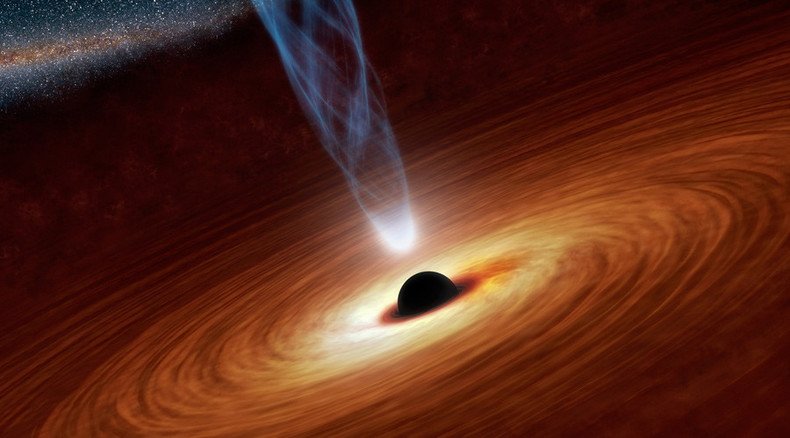Cosmic collision: Supermassive black holes to crash sooner than predicted

A huge galactic collision will be taking place sooner than predicted, according to a new study. Two supermassive black holes are edging closer to a crash – and that impact will be so strong it will send violent ripples through the fabric of space-time.
The two supermassive black holes – known as quasar PG 1302-102 – are three-and-a-half billion light years from Earth, in the Virgo constellation. The duo is separated by just one light week – and while that may seem like a great distance, it's actually quite close by space standards, considering the next closest known pair of black holes are 20 light years apart.
They were initially discovered in January, when astronomers noticed an unusual bright spot of UV light coming from the center of the galaxy. At the time of discovery, scientists said they expected the two to crash into each other in 250,000 years.
What black hole and house thermostat have in common: NASA explains http://t.co/kB9Dczoltypic.twitter.com/RmcuDLZVag
— RT (@RT_com) August 7, 2015But now, using new calculations, researchers from Columbia University say the collision is likely to take place earlier - although still not anytime close to our lifetime. According to new data, it could take place in around 100,000 years. The observations were published in the journal Nature.
Focusing on PG 1302-102 because of its brightness, the team hypothesized that if the two black holes were as close as predicted, one had to be circling the other at a 10th of the speed of light. They predicted they would find a five-year cycle in the pair's ultraviolet emissions, which is exactly what happened.
They then estimated and combined the relative mass of the two black holes to narrow down the timescale of the predicted collision.
#NASA discovers ‘smallest supermassive’ black hole ever http://t.co/BtxuCvjx1Fpic.twitter.com/Y5K9ZPo2aB
— RT (@RT_com) August 12, 2015When the collision occurs, it could release as much energy as 100 million supernova explosions in the form of violent ripples. However, scientists are not predicting any apocalyptic consequences for our part of the galaxy. On the contrary, the crash will be highly beneficial for astronomers of the far, far future, as it will allow them to observe the gravitational waves predicted by Albert Einstein nearly a century ago.
“The detection of gravitational waves lets us probe the secrets of gravity and test Einstein’s theory in the most extreme environment in our universe — black holes,” said the study’s lead author, Daniel D’Orazio, a graduate student at Columbia, in a statement. “Getting there is a holy grail of our field.”
However, there is a chance science won't have to wait 100,000 years to witness the phenomenon. PG 1302-102 is one of 20 pairs of black hole candidates that have been found by scientists. Researchers hope to find more colliding black holes and believe they may be able to witness a crash within the next 10 years, according to the International Business Times.












